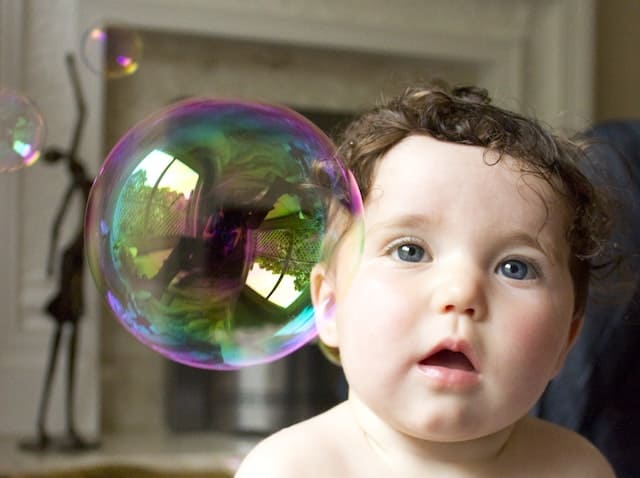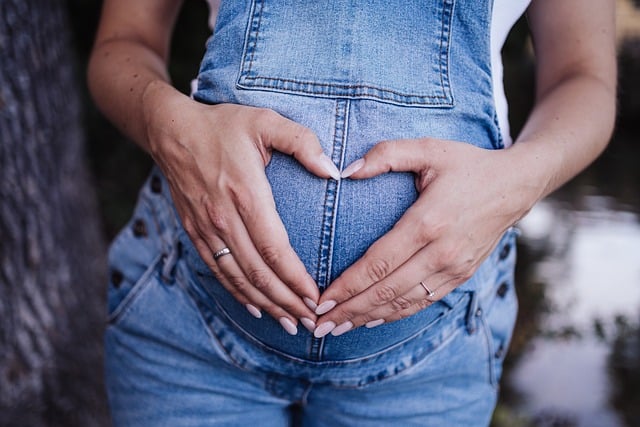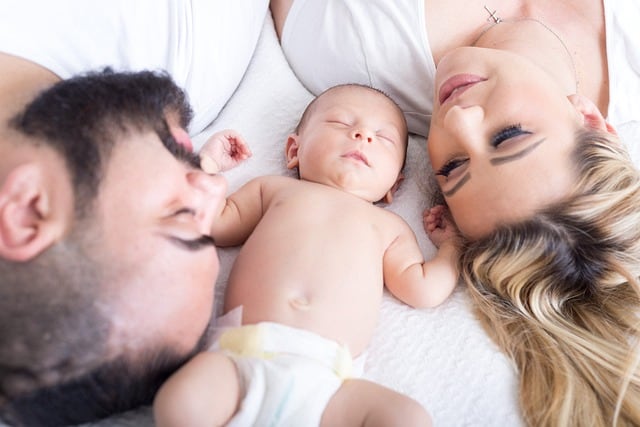When a baby looks between their legs, it can be a curious and amusing sight for parents and caregivers. However, many may wonder what this behavior means and whether it indicates any physical or developmental issues. In most cases, babies looking between their legs is a normal part of their exploration and discovery of their bodies.
Understanding Baby’s Curiosity
Babies are naturally curious and interested in exploring their bodies and the world around them. Looking between their legs is just one of the many ways they discover and learn about their bodies. It is a normal part of their physical and cognitive development and should not be a cause for concern.
Physical Development in Babies
As babies grow and develop, they become more aware of their bodies and their surroundings. They start to develop motor skills, such as rolling over, crawling, and eventually walking. Looking between their legs is a natural part of this physical development, as they become more aware of their genitals and how they fit into their overall body scheme.
Key Takeaways
- Babies looking between their legs is a normal part of their exploration and discovery of their bodies.
- It is a natural part of their physical and cognitive development and should not be a cause for concern.
- Looking between their legs is a natural part of this physical development, as they become more aware of their genitals and how they fit into their overall body scheme.
Understanding Baby’s Curiosity
Babies are naturally curious beings who are constantly exploring and discovering the world around them. One way they do this is by looking between their legs, which can be a source of confusion or concern for parents.
However, this behavior is completely normal and is simply a way for babies to learn about their bodies and the world around them. As babies become more aware of their surroundings, they begin to explore their own bodies and the different sensations they experience.
Looking between their legs is just one way that babies satisfy their curiosity and learn about their bodies. It is a natural part of their cognitive development and helps them to understand the different parts of their body and how they work.
This behavior also plays an important role in brain development, as it helps babies to develop their cognitive skills and learn about cause and effect. By exploring their bodies and the world around them, babies are able to build a foundation for future learning and development.
In conclusion, it is important for parents to understand that when babies look between their legs, it is simply a natural part of their curiosity and exploration. By encouraging this behavior and providing a safe and supportive environment for their babies to learn and grow, parents can help to foster their child’s cognitive development and set them on the path to a lifetime of learning and discovery.
Physical Development in Babies
Physical development in babies is a continuous process that starts from the moment they are born and continues through their childhood. During the first few months of life, babies are mostly inactive and spend most of their time sleeping. However, as they grow older, they become more active and start to explore their environment.
One of the most significant physical milestones in a baby’s development is when they learn to roll over from their back to their stomach and vice versa. This milestone usually occurs around four to six months of age. It is also around this time that babies begin to develop their depth perception, which allows them to judge distances accurately.
As babies continue to develop physically, they start to stretch and reach for objects. They also begin to crawl on all fours, which helps them to develop their balance and body awareness. Crawling is an essential milestone as it helps babies to develop their vestibular system, which is responsible for maintaining balance and spatial orientation.
Another physical milestone that babies achieve around six to eight months of age is sitting up. This milestone is crucial as it allows babies to explore their environment from a different perspective. It is also around this time that babies start to develop their fine motor skills, which involve the use of small muscles in their hands and fingers.
As babies continue to develop physically, they start to stand up and take their first steps. This milestone usually occurs around nine to twelve months of age. Walking is an essential milestone as it allows babies to explore their environment independently and develop their gross motor skills, which involve the use of large muscles in their arms and legs.
In conclusion, physical development in babies is a continuous process that involves various milestones and stages. As babies grow older, they become more active and start to explore their environment. It is crucial for parents and caregivers to provide babies with a safe and stimulating environment that allows them to develop their physical skills and abilities.
Cultural Interpretations and Superstitions
The act of a baby looking between their legs has been interpreted in various ways across cultures and superstitions. Here are a few examples:
- In some cultures, it is believed that a baby looking between their legs is a sign that they will have a sibling of the opposite sex.
- In some superstitions, it is believed that a baby looking between their legs is a sign that they will be a great traveler in the future.
- In some old wives’ tales, it is believed that a baby looking between their legs is a sign that they will have a long life.
- In some cultures, it is believed that a baby looking between their legs is a sign that they have a special gift or talent that will be revealed later in life.
It is important to note that these interpretations and superstitions vary greatly depending on the culture and region. Additionally, there is no scientific evidence to support any of these beliefs.
Overall, the act of a baby looking between their legs is simply a normal part of their development and exploration of their body. It is important for parents and caregivers to provide a safe and supportive environment for their child’s exploration and development.
Baby’s Learning and Imitation
Babies are constantly learning and imitating the actions of those around them. They are like sponges, absorbing information about the world through their senses. One way that babies learn is by watching the actions of others and trying to copy them.
When a baby looks between their legs, it could be a sign that they are trying to imitate the actions of an adult. For example, if a baby sees an adult bend over and look between their legs to pick something up off the ground, the baby may try to copy this action.
Babies are also very reactive to their environment. They may look between their legs as a reaction to something that they see or hear. For example, if a baby hears a loud noise behind them, they may turn around and look between their legs to see what is going on.
It is important to note that not all actions that babies imitate are safe or appropriate. Parents and caregivers should be mindful of their own actions and behaviors around babies, as they may be imitated. It is also important to provide a safe and nurturing environment for babies to learn and explore.
Fun and Games with Babies
Playing with babies can be a fun and rewarding experience for both the baby and the caregiver. Babies love to play and explore their surroundings, and there are many ways to engage with them that can be both educational and entertaining.
One fun game to play with babies is peek-a-boo. This classic game involves hiding your face behind your hands or a blanket and then revealing yourself with a big smile and a cheerful “peek-a-boo!” Babies love the surprise of seeing your face appear after it has been hidden, and it can often elicit a lot of giggles and laughter.
Another fun activity to try with babies is baby yoga. Baby yoga involves gentle stretches and movements that can help to improve flexibility, coordination, and balance. It can also help to calm and soothe babies, making it a great activity to try before nap time or bedtime.
Hanging upside down can also be a fun game to play with babies. This can be done by holding the baby securely under their arms and gently lifting them up and then lowering them back down again. Babies often enjoy the sensation of being upside down and it can be a great way to engage their sense of balance and spatial awareness.
Overall, there are many fun and engaging activities that caregivers can try with babies. Whether it’s playing peek-a-boo, trying baby yoga, or hanging upside down, these activities can help to stimulate the baby’s senses and promote healthy development.
Pregnancy and Sibling Interactions
During pregnancy, it is common for older siblings to become curious about the changes happening to their mother’s body. Toddlers, in particular, may notice that their mother’s belly is growing and may become fascinated with the idea of a new baby joining the family.
One behavior that some young children exhibit during pregnancy is looking between their own legs. This behavior can be confusing and concerning for parents, but it is typically harmless and a normal part of a child’s development.
When a child looks between their legs during pregnancy, it is often a sign of curiosity and exploration. Young children are naturally curious about their bodies and the world around them, and they may be trying to better understand the changes happening to their mother’s body.
It is important for parents to approach this behavior in a calm and neutral manner. Parents can explain to their child that the baby is growing in their mother’s belly and that looking between their legs will not help them see the baby.
Overall, pregnancy can be an exciting time for siblings, but it can also be a time of confusion and curiosity. By approaching their child’s behavior with patience and understanding, parents can help their child navigate this exciting and sometimes confusing time.
Health and Comfort of Babies
When a baby looks between their legs, it can be an indicator of their comfort level. Babies often explore their bodies as a way to learn about themselves and their environment. This behavior is completely normal and should not be a cause for concern.
It is important to ensure that a baby’s diaper is clean and dry to prevent any discomfort or irritation. Diaper rash can be a common issue for babies, but it can be prevented by changing their diaper frequently and using a diaper cream if necessary.
Babies also benefit from skin-to-skin contact with their caregivers. This can help regulate their body temperature, heart rate, and breathing, as well as promote bonding and a sense of security.
In addition to physical comfort, babies also need emotional comfort and soothing. Responding promptly to a baby’s cries and providing comfort can help regulate their emotions and promote a sense of security. This can include holding, rocking, or singing to the baby.
Overall, ensuring a baby’s health and comfort is essential for their well-being. By providing a clean and dry diaper, skin-to-skin contact, and emotional comfort, caregivers can help promote a sense of security and positive development for their baby.
Parenting Discussions and Advice
When a baby looks between their legs, it can be a cause for concern for some parents. However, this behavior is actually quite common and normal. Babies are naturally curious and exploring their bodies is a part of that curiosity.
As a parent, it’s important to not overreact to this behavior. It’s best to remain calm and neutral. If a parent reacts negatively, it can send the message that exploring their own body is shameful or wrong. This can have negative effects on a child’s self-esteem and body image later in life.
Instead, parents can use this opportunity to teach their child about body parts and boundaries. It’s important to use proper names for body parts and explain that some parts are private and should not be touched by others.
If a child continues to excessively explore their body or shows signs of discomfort or pain, it may be a good idea to consult with a pediatrician to rule out any underlying medical issues.
In summary, when a baby looks between their legs, it’s important for parents to remain calm and neutral, use proper names for body parts, and teach about boundaries. If there are any concerns, consulting with a pediatrician is recommended.
Related Posts:
Frequently Asked Questions
What is the significance of a baby bending over and looking between their legs?
Babies are naturally curious and exploring their bodies is a part of their development. When a baby looks between their legs, it could simply be a way for them to explore their genital area. However, in some cases, it could be a sign of a medical condition or discomfort.
What are the possible reasons for a baby to bend over and look between their legs?
Babies may look between their legs for various reasons. Some babies might be exploring their genital area, while others might be experiencing discomfort or pain. In some cases, it could be a sign of a medical condition such as a urinary tract infection or constipation.
Is it normal for a baby to bend over and look between their legs?
Yes, it is normal for babies to explore their bodies, including their genital area. However, if the behavior is accompanied by other concerning symptoms, it is important to consult a doctor.
What are the signs of autism in babies?
Autism is a developmental disorder that affects social interaction, communication, and behavior. Some signs of autism in babies include delayed language development, lack of interest in social interaction, and repetitive behaviors.
Can a baby standing on its head be a cause for concern?
Babies are naturally flexible and may enjoy exploring different positions, including standing on their heads. However, if the behavior is accompanied by other concerning symptoms, such as delayed motor development or poor muscle tone, it is important to consult a doctor.
At what age do babies start pushing up on their legs?
Babies typically start pushing up on their legs around 2-3 months of age. This is an important milestone in their physical development and helps prepare them for crawling and walking.

Iesha is a loving mother of 2 beautiful children. She’s an active parent who enjoys indoor and outdoor adventures with her family. Her mission is to share practical and realistic parenting advice to help the parenting community becoming stronger.




